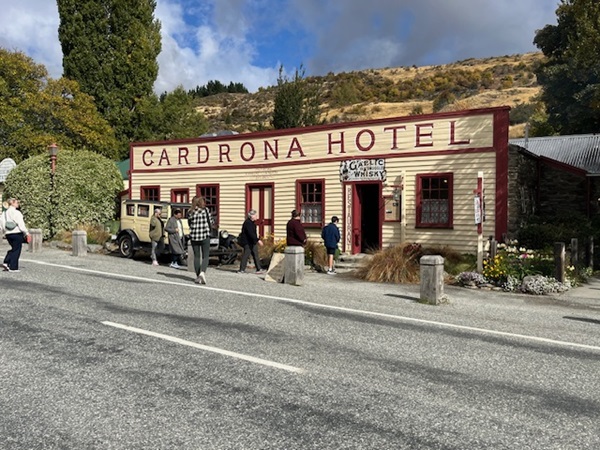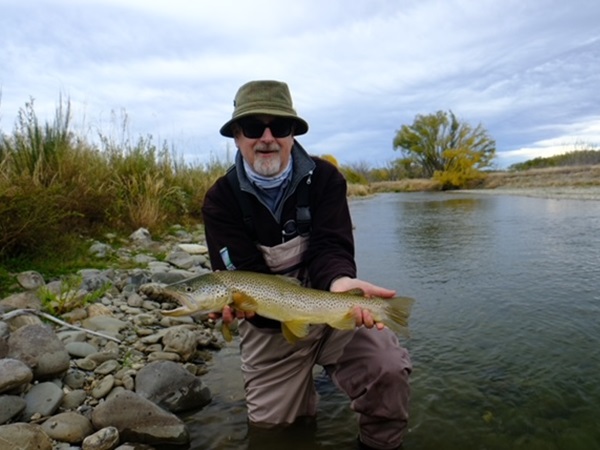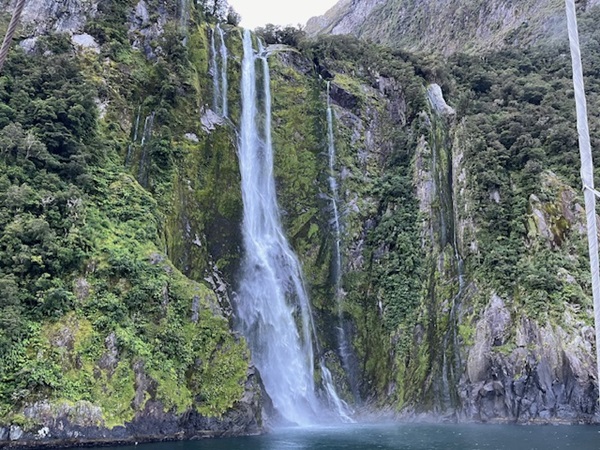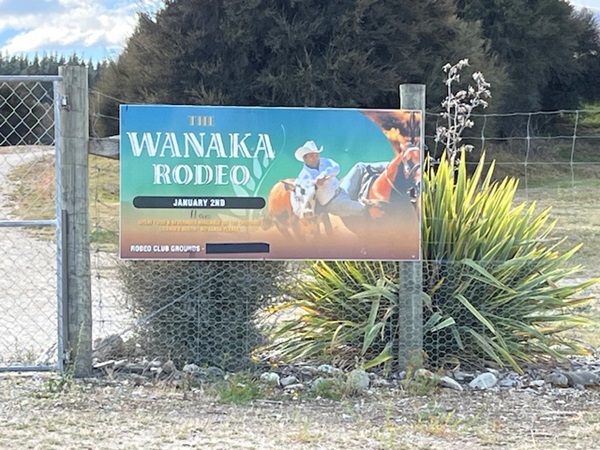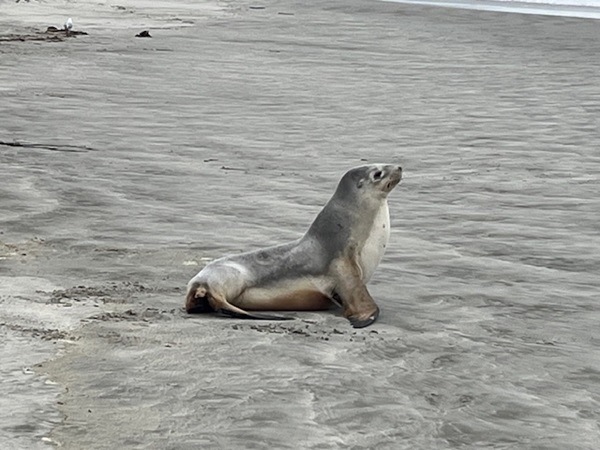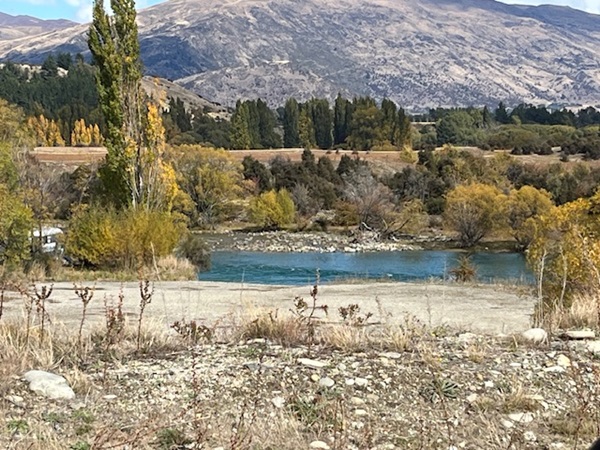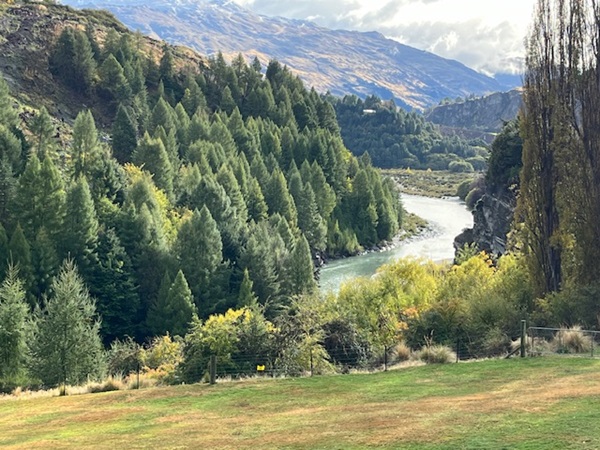 Queenstown, New Zealand, scenery;
Credit: Chronicle.lu
Queenstown, New Zealand, scenery;
Credit: Chronicle.lu
In spring this year I got the opportunity to visit New Zealand, spending nine days in the South Island prior to a family wedding in Melbourne, Australia, then another nine days in Tasmania.
Compared to Ireland (population 7 million in 2023, with Dublin at 1.5 million; 84,000 km2), New Zealand's population is around 5 million (with its Capital Wellington having a poulation of 450 thousand) spread over 268,000 km2 - 114k km2 for the North Island and 151k kms for the South Island (plus a myriad of smaller islands).
The Land of the Long White Cloud is known for its remoteness, its rugby, its flightless birds, it sheep/lamb industry and Kiwi fruit. Wellington is the first capital city to ring in the new year annually, with the first pictures beamed across the world.
We got to see the South Island, rather the southern half of the South Island. To get there, we had flown to Singapore for a one-night stopover and then resumed our travel, changing flights in Sydney before landing in Queenstown - which happens to be the adventure sports capital of New Zealand - which is situated between snow-capped mountains, not unlike Innsbruck in Austria. We picked up the hire car and drove the short distance to our Airbnb where our delightful host showed us the facilities, the amazing view and suggested a couple of places to eat that evening.
After a great night's sleep we were over the jetlag and awoke to both the amazing view of mountains, valley, trees and rivers, something we agreed could never be captured on any photo or painting. While we were taking that in, our even-more-amazing breakfast arrived, including cereal, fruit, bread, pastries, eggs, juice and tea/coffee. Before we set off for the first day trip we decided to stay there another night, so we just packed the car with what we needed for that day.
Driving in New Zealand
Overall we travelled around 1,700 kilometres over the nine days, staying one of two nights at a time in each location. We had booked the first and last nights beforehand, as well as a couple of nights around fly-fishing - I just could not visit New Zealand without trying some of the amazing fly-fishing for trout on the pristine rivers.
They drive on the left there, and the only dual carriageway / motorway section we encountered in our entire time there was approaching Dunedin for just a kilometre or so. The rest was standard roads, with broken white lines down the centre… national roads. The surfaces were fine and we just had one day when it rained. But the big, big issue with driving in New Zealand was that there were very, very few cars on the roads.
What made up for this was the amount of roadkill, the majority of which were possums which we learnt many local drivers go out of their way to hit as they are considered vermin.
And another thing, we often stopped at laybys, or lookouts, where we could take a break from driving, sometimes availing of the toilet facilities provided (often in the middle of nowhere). This was a big feature of the roads around New Zealand which frequently passed stunning scenery involving lakes, mountains, valleys or rivers.
It was their autumn and it was starting to get a bit chilly some evenings, but daytime temperatures meant that it was just shirt-sleeves on most days, with jumpers required on others. But we were not there for a summer holiday, we were there to see the scenery and enjoy ourselves exploring.
Oh, and parking: this was different. Yes, one had to pay at ticket machines, typing in the car's registration number and then paying. There were no traffic wardens on duty at all; the system instead involved cameras which would read the licence plates and match those up with what had been paid. So this system could be deployed in cities and towns with equal efficiency.
Accommodation in New Zealand
The main travel accommodation in New Zealand is motels; we were a bit sceptical beforehand as motels that we knew from the 70s and 80s did not have a great reputation, to say the least; but there was no comparison whatsoever. All were spotlessly clean, we had a separate bedroom, living area, kitchenette and bathroom. And every place we went had washing facilities, either with free washing powder, or self-service with an honesty box n operation. Upon checking it, it was not uncommon to be asked if we wanted some fresh milk - the first time this happened, we just looked at each other, not understanding the question; it is a long time since strangers we met were so welcoming and friendly. And not just some, not most, but ALL, absolutely everyone we met in New Zealand from the moment we landed to the moment we left.
Definitely the most friendly country / nationality / race of people we have ever met, without a doubt.
Food in New Zealand
Most restaurants closed early, very early, so we learnt quickly, and most were very reasonably-priced indeed. While Queenstown was the largest metropolis we stayed in, we ate mostly in towns and some villages while driving from Point A to Point B.
The choice was varied and cooked well, with good presentation. Sometimes there was just a café available, sometimes it was a full restaurant, but always it was service with a smile, and eager to please.
The one thing that did surprise us here, though, was the seafood. New Zealand has a wonderful seafood industry but it appears to export the vast majority of it; trying a fish supper one day was quite disappointing, to say the least.
Apart from the first place we stayed, which had breakfast included, we self-catered for the first meal of the day, buying supplies at the local supermarkets and market produce stands.
Places to Visit and Things to See
We visited Lake Wanaka, the day after an air show, so it was quite busy. We strolled along the lakeshore, watching a number of different water sports taking place, and we came across a famous tree and managed to get some photos with great light.
We drove across the mountains out to Taiaroa Head, a point outside Dunedin, for the wildlife, and then we took a trip along the southern coast, stopping in Riverton, just past Invercargill which were told is quite industrial. Riverton just had their Day at the Races, so it had quietened down, but it was a delightful spot with a well-to-do residential quarter and a slightly run-down main street. We attended a Church service on the Sunday and I admit I spent longer talking to the pastor afterwards over coffee and cake about fly-fishing in New Zealand that the duration of the service.
Our itinerary took us clockwise to Te Anau on the outskirts of Fjordland. There we stayed at a campsite where we had our own chalet which was much the same as the motels we had used elsewhere. This was lovely and relaxing and again it was situated on a lake. Then a drive through Fjordland with plenty of stops along the way to Milford Sound, one of 14 fjords in New Zealand. We decided to make full use of our time there and, instead of taking a 2-3 hour cruise into the fjord, we decided to take an overnight one. We parked overnight and boarded the boat, were given our keys to a comfortable cabin with an en-suite bathroom. We convened on one of the decks and got to know some of our fellow passengers (just 40 in total) over a welcome cocktail as the captain and crew introduced themselves. We saw majestic waterfalls (the crew apologised that they were not more in flood as they had no rainfall for four days which apparently is almost unheard of there) and were given a history of the area. We stopped and could choose whether to explore the shoreline and mouth of the fjord via kayaks or small tenders; over dinner we chatted with passengers from the North Island, from America and elsewhere, all with different stories, but for all it was their first time at Milford Haven. After dinner, we had a couple of nature presentations using photos and videos and, in the morning, after a shower and breakfast, we headed back to port to drive back to Te Anau and then around to Queenstown again.
What also surprised up on our trip was that we passed no less than three rodeo venues where all we could see were the metal bens, the show ring and the stands. Obviously this is a big thing in this neck of the woods.
Nature in New Zealand
We learnt early on that many of the rocks in fields that we saw after landing we indeed sheep. They are just like sheep back home, but coloured differently. Rock-coloured.
While the terrain was not a lush green as we had envisaged, it was certainly fertile and very, very hilly and rugged in parts. Hillside vegetation was more a light brown than a green, and many hillsides were in fact grey and black without any signs of vegetation at all, quite like Middle Earth in Lord of the Rings…
I mentioned above about road kill and possums: we discovered that the only mammal native to New Zealand is a bat - all others have been introduced, either intentionally or not. As a result, the native birds (all of which build their nests on the ground as they traditionally had few natural enemies) have suffered enormously over the years.
One of the more interesting we learnt was that, approximately once every seven years, there is an explosion in the number of beech trees that germinate and grow. As a result there are many more insects; in turn there are many more mice and hedgehogs, in fact the entire food chain is affected.
We saw many, many hawks while driving around, with some feeding on hedgehogs caught in traps, such were their numbers. The mice are also eaten by fish when trying to swim across rivers, etc., thus explaining why the size of fish is so large compared to certainly Ireland and the UK.
We also visited a colony of albatrosses on a headland off the point east of Dunedin, and saw some yellow-eyed penguins fishing in the sea. We got up relatively close to sea lions who enjoyed the rocks and beaches that dotted the coastline. We also saw many deer, some wild and some in farms.
And south-west of Dunedin we passed through a micro climate which was described as a coastal rainforest in the Catlins region where the mosses thrived and the ferns were ginormous.
Fly-fishing in New Zealand
We ended up in a town called Alexandra, where I met up with a fishing guide who was originally from Ireland. We had two days on the Manuhirika River, with the first day fishing a four-kilometre stretch south of Becks Bridge, and the next day fishing a way upstream in terrain that is not too dissimilar to Connemara in the West of Ireland or the Yorkshire Dales in the north of England.
We were sight-fishing, with my guide sighting the fish and me fishing for them. On each day I landed four trout, a mixture of brown trout and rainbow trout, all between four and five pounds, and losing a bigger fish on both days. But I would claim that, wouldn't I?... If not, fishing wouldn't be the same. It was exhilarating when hooking and playing big fish like that...

